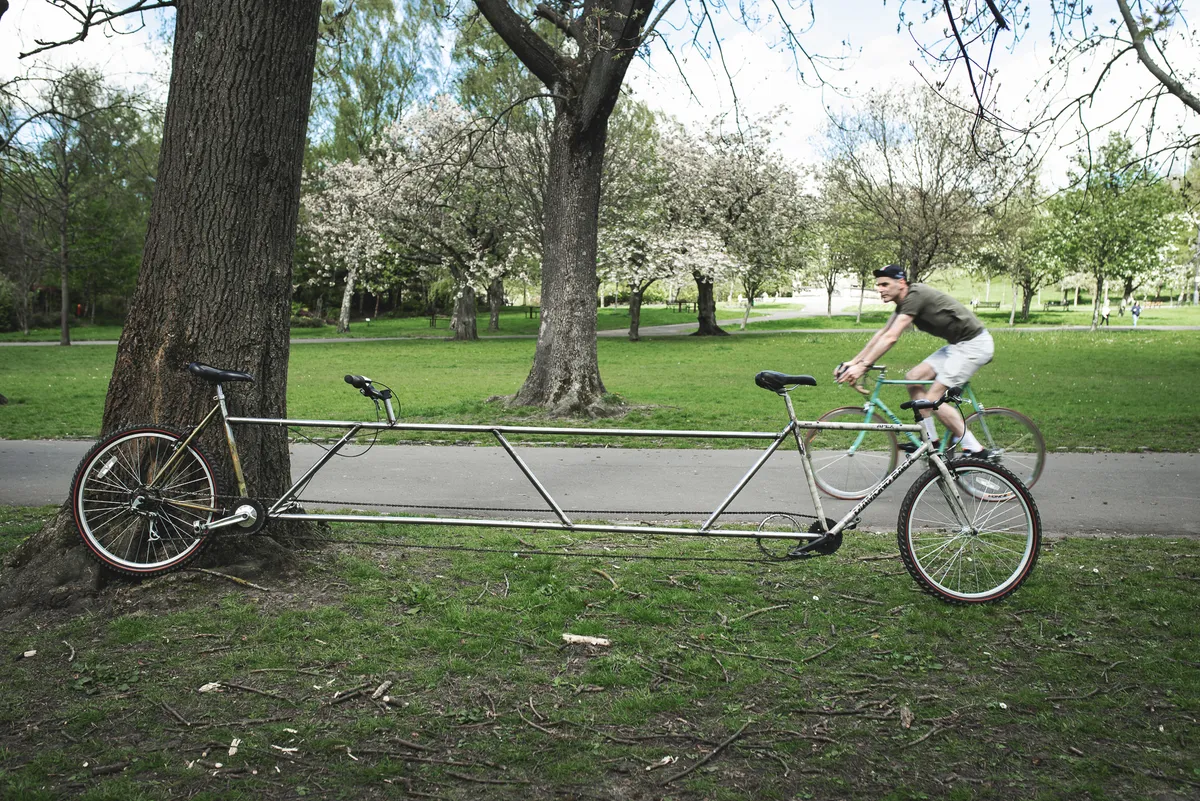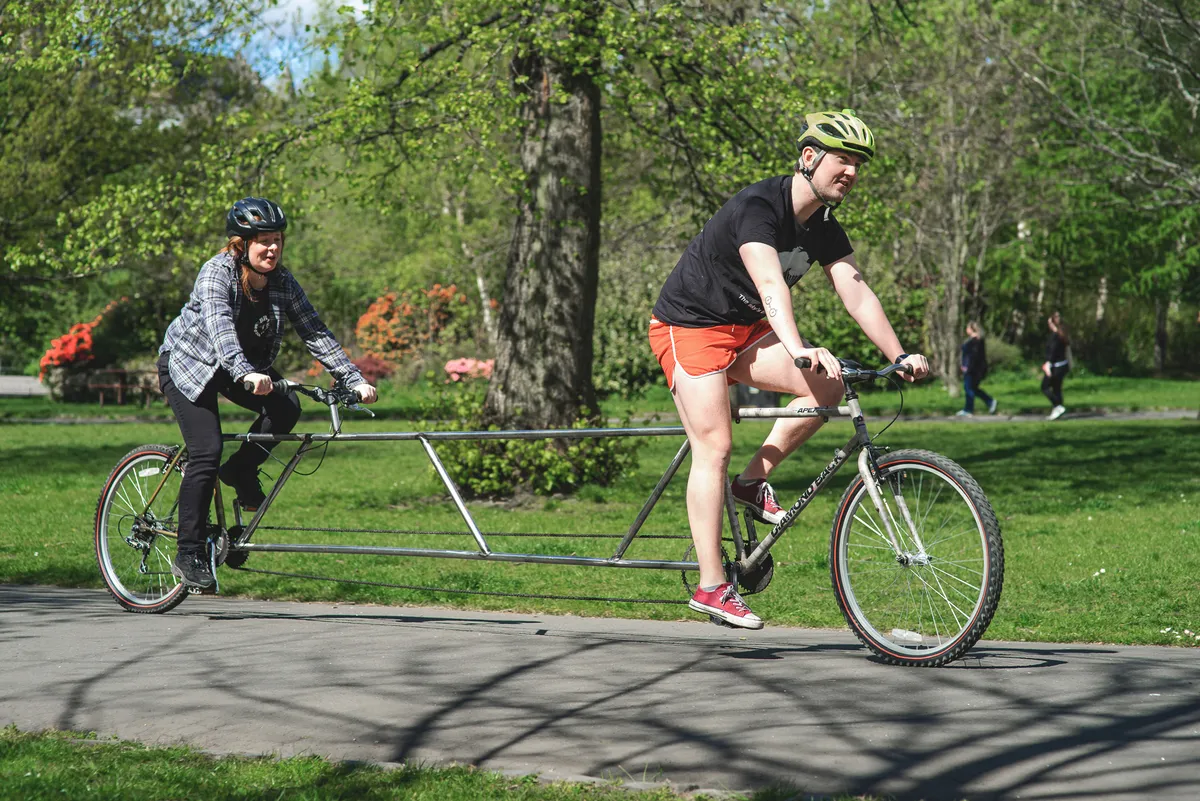Colin Woof is a Glasgow-based engineer and bike builder who has built this ludicrously long tandem during the ongoing Covid-19 pandemic.
At more than 4.3m long, the Social Distandem is a tongue-in-cheek nod to the UK government's current social distancing guidelines, which require people to stay two metres apart from anyone not from their own household.
Constructed from scrap bikes donated to Bike for Good – a cycling charity also based in Glasgow – Colin has done the seemingly impossible in making the humble but already unwieldy tandem into something even more impractical.

Tech highlights include the stoker-controlled rear shifting (the stoker is the rear co-pilot of a tandem team and has a curiously aggressive riding position on this bike) and the 'floating' chainring used as a timing chain tensioner.
Keen to learn more, I contacted Colin to find out how the Social Distandem came to be.
Editor's note: It's worth being clear, given the gravity of the worldwide coronavirus situation, that this bike is fun side project. We don't expect Colin to be out shredding on this bike any time soon, nor is it one designed to bend social distancing rules.
In the UK, you shouldn't be riding with anyone you don't live with. Social distancing is no joke, so please obey all local advice regarding lockdown in your local area and stay safe out there.
Who are you, what do you do, and what is your involvement in bikes?
I am a lifetime bike rider, bike tourist, bike advocate and bike enthusiast.
How did you make the bike?
Precision angle grinder usage, haphazard welding and reliance on hope and good intentions as a structural element.
What is it like to ride?
The bike is so long that the front and rear feel weirdly disconnected. The front rider is balanced right on the front wheel and turning the front wheel will swing the front of the bike from side to side while the rear just keeps on trucking straight.
It's definitely optimised for straight lines – maybe the velodrome is the best place to use it?

What do you have in mind for the bike in the future?
The bike's future is currently unknown. If there are any interested parties who feel they would benefit from having an extremely long and unwieldy bicycle shaped object, then please get in touch.
How did you source the parts for the bike?
I'd like to thank Bike For Good for access to a pile of scrap parts for this project and, more widely, the other bicycle recycling charities of Scotland: The Bike Station, Bikes for Refugees, and so on. These charities do great work getting people out on bikes and normalising attitudes towards using cycling as a form of transport.
Many thanks to Colin for taking the time to answer my questions and... enjoy the bike?

